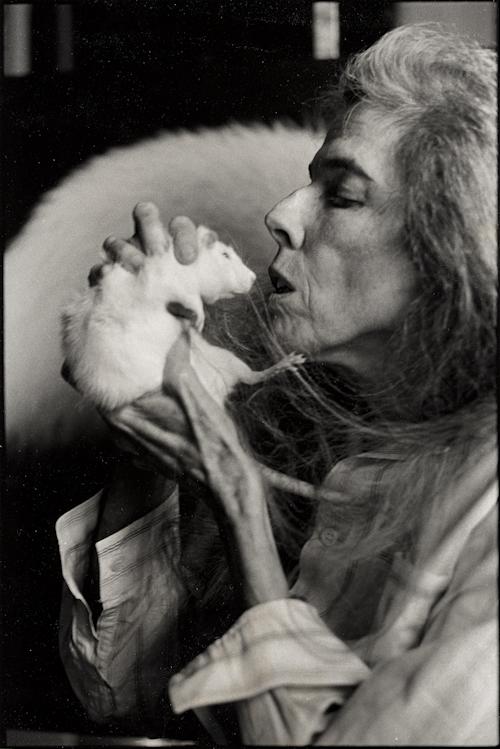Unless you were a working, writing, painting, drawing, kibitzing, loving, hanging-out member of the Washington art and gallery scene going back to the 1970s up to now, the name Manon Cleary might not immediately ring your memory bell.
To many interested people, she was something of a rumor, a wispy legend, but to those familiar with the scene and to her friends, students, intimates, her peers, she was a major somebody, a painter who was seen by at least one critic as one of the major and perhaps best figurative painters this city had to offer, perhaps one of the best in the country.
She painted and painted and painted, and her best, most visceral, most literal and haunting was herself and her body—and rats, bye the bye. If ever there was a person, man or woman, who lived the life of the artist in the very best sense of the idea, as well as its most outrageous, dramatic, shining, purposeful, generous sense, it was Cleary, who died at the age of 69 last Saturday, succumbing to her long-time companion, chronic obstructive pulmonary disease.
It’s easy enough to spy the drama, the aura surrounding her: she was one of those slender, great, long-haired beauties that once met, seem to remain unforgettable, and causing regrets in distant admirers who never got to know her. In her last years, she was forced to move about in public with breathing tubes and oxygen tubes, which turned her into a different presence, a presence which she brought off with remarkable aplomb.
She was a figurative artist class of photo realism but still in a major class by herself. Her subject was life itself, mostly her self—nudes at various stages of her life, with no illusion, bouts of self-flattery. Her work would come out in themes—including one a series of graphic works dealing with her 1996 rape in Kazakhstan. She painted her pet rat(s), white and hungry, she painted male nudes, and she paid skyscapes and erotic flowers that recalled but did not imitate O’Keeffe.
For the past 40 years, she lived in the Beverly Courts Apartments on 18th Street in Adams Morgan, famous in earlier years as a run-down bohemian art magnet, especially because she lived there in a fourth-floor apartment. The façade, the musical, jarring, often painful surface of her life obscured her willingness, indeed, her great passion to help younger artists, protect them; promote them for all of her life. She taught for years at UDC.
If you read the stories about her, from which we’ve drawn this obituary, they seem to sing a lot of songs—a kind of alluring, fragile vitality, a siren song, of a woman with an operatic first name and an Irish-sounding last name. The rats, the friends, the strong and continued output of work made her a Washington original, a kind of scarred patron saint of struggling artists.
I saw her once in 2005 when the Flashpoint Gallery had a showing of photographer Mary Swift’s “The Arts Scene, 1975-2000.” Many survivors—artists, curators, photographers, painters and gallery owners—showed up to see themselves on the wall in younger, halcyon days.
Cleary was there, with breathing tubes and oxygen tank, drawing a crowd with strong eyes and thin body. You went to her like a helpless moth, joining the fringe of a circle around her.
I didn’t know her. I could say though from what I’ve read, from the works I’ve seen, and the time she spent at the exhibition, with certainty that she had great, unspoken courage, brave artist, and brave woman.
Cleary is survived by her husband F. Steven Kijek and a twin sister, an artist who lives in Montana.


